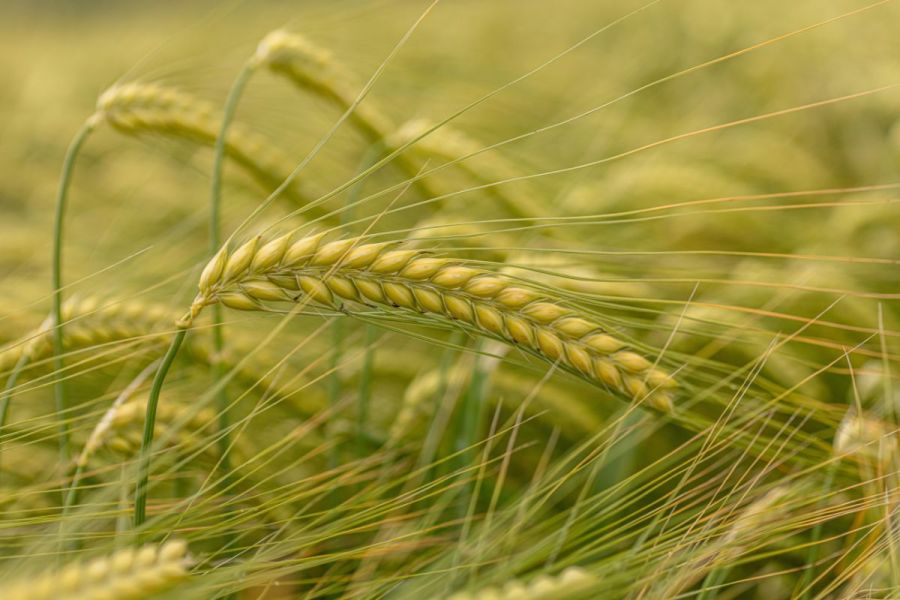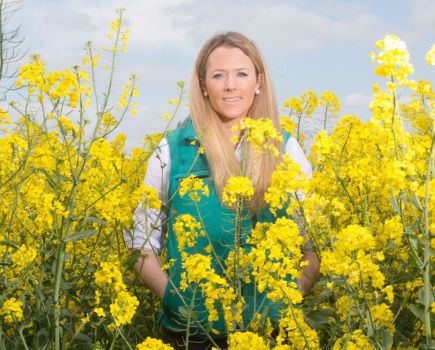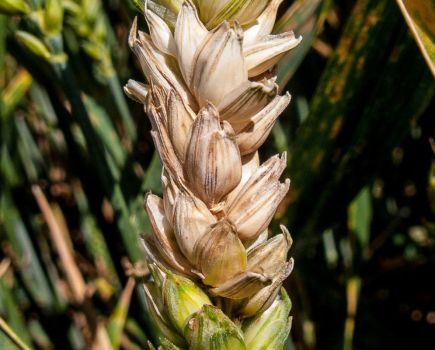New malting barley varieties capable of producing more litres of alcohol per hectare could not only reduce the carbon footprint of beer and spirit production, but they could also deliver significant benefits for growers. CPM finds out more.
“All involved have to keep challenging themselves to develop new ways of growing, marketing and processing the crop.”
By Rob Jones
A new style of spring barley genetics is urgently required if the industry is to meet the challenges of high yields and returns for growers, together with the carbon footprint obligations of beer and spirit producers, says independent soil and carbon specialist, Neil Fuller.
“There are new pressures on growers and trade alike with regard to efficiency of production, use of nitrogen and the overall move to more sustainable processes across the industry. Spring barley has so much going for it now and in the years ahead, but all involved have to keep challenging themselves to develop new ways of growing, marketing and processing the crop for it to reach its full potential,” he stresses.
Neil explains that for a start, there’s the opportunity to use cover crops to boost organic matter and improve soil structure, achieve better weed control with reduced use of herbicides, and benefit from higher levels of N-efficiency than with many other crops.
“Ongoing improvements in resistance to disease and abiotic stress also mean fewer inputs are required, giving growers a far greater chance of achieving sustainability objectives while restoring soil carbon balance.
“In addition, greater yield potential allows the carbon burden carried by each tonne of grain to be diluted and the CO2 output per calorie of energy or litres of alcohol produced to be significantly reduced,” he says.
According to KWS’ Dr Kirsty Richards, the recent challenging weather has undoubtedly focussed many farmers’ attention on spring barley, but long-term thinking is required for the UK crop to develop fully.
“There’s a certain irony that when the potential for this economically and agronomically valuable crop is so great, there’s still a limited range of options available to those wanting to grow spring malting varieties.
“The most commonly grown malting barley varieties have been on the RL for the past eight years, with only two Malting Barley Committee (MBC) fully approved additions made in the past three years,” she says.
“That’s very different from other cereal crops where breeders are constantly innovating and bringing varieties with a better fit to market requirements, higher yields and improved disease resistance to the RLs,”
Kirsty says relying on a limited number of varieties is a problem when a breakdown of disease resistance could severely affect the whole sector. “Relying on older genetics that are less efficient at converting inputs and investment into yield, is also a big problem for growers.”
Neil agrees, adding that more modern, efficient varieties could do much to unlock the high carbon footprint involved in spirit and beer production. “Some of our studies show that a significant fraction of the carbon footprint of beers and spirits comes from the carbon emissions associated with the production of the grain.
“Halving the carbon footprint of the crop production process by 2030, in line with SBTI guidelines, will result in a major reduction in the carbon liability generated at farm level, which will track right through the supply chain. Imagine being able to actively combat climate change simply by drinking a pint of beer,” he ponders.
Furthermore, Neil says reducing inputs to reduce emissions can effectively compromise yield and quality, which can impact on supply chain resilience and actively increase carbon emissions per tonne.
“But new varieties have the ability to de-risk this and every incremental gain that genetics can deliver helps us as farmers and agronomists to get the most from regenerative agriculture practices,” he stresses.
Although relatively new to spring barley breeding, KWS came close to upsetting the status quo last year with the introduction of KWS Curtis, suggests Kirsty. “We just missed being recommended by the MBC, but we believe Curtis is still a good example of the new style of variety required for the future.
“From a grower’s perspective, the 2023/24 AHDB RL shows it achieving a UK-wide treated yield of 104% of controls, recording 103% in the North and 105% in the East. It also scored an exceptional 9 for mildew resistance, 7 for Rhynchosporium, and a best-in-class 8 for lodging resistance without PGRs,” she says.
The combination of high grain yields and good alcohol yields also puts it a step ahead of current commercialised varieties in this respect, believes Kirsty. “Simply put, compared with current brewing and distilling market leaders, Curtis produces more litres of alcohol per hectare.
“In official trials its spirit yield was 3687 l/ha, versus 3600 l/ha for a competitor, To produce 1000 litres of alcohol in this situation, Curtis would generate 120kg less CO2. Brewing trials also found that Curtis produced a Hot Water Extract (HWE) figure of 2,497,068 l/ha, compared with 2,258,665 l/ha for a leading competitor.”
Stuart Rowley of Driffield-based grain and seed merchants James Mortimer, is keen for spring barley growers to keep an open mind when it comes to varieties. “As a firm which has been trading for more than 150 years, we take a long-term view, focusing on what’s best for our growers and end-user customers, including multiple maltsters.
“Malting barley is a hugely important part of our customers’ businesses and our own, with the majority being spring varieties.”
Stuart says although it’d be easy to discard those which don’t make the RLs, judgements should be based on the requirements and best interests of customers and end homes.
“Increasingly, farmers require help to optimise their farming practises and we’re acutely aware from prior experience that it takes years to transition malting barley growers from one variety to another due to the risks involved. This means it’s critical that we investigate new varieties which we believe in, early on in their development.”
During the past two seasons, James Mortimer has conducted commercial malting trials with Curtis. “We started with a 200t trial for Harvest 2022 and the success of that led to it being expanded to 2000t last year,” explains Stuart.
“That customer has subsequently pivoted their entire spring barley crop to Curtis this year. Given this real-world experience in our local area, and the fact that it has a ready market with maltsters, we’ve moved a considerable percentage of our spring malting barley seed growing area to Curtis and have more than 30 growers testing the variety.”
Mark Richardson, Farm Manager at Warter Priory Estate near Pocklington, is one of these growers and says the variety has performed well. “Curtis has out yielded other spring barleys grown on the estate by 5-10% during the past two years, across a range of growing conditions and soil types. It’s fitted into our mix brilliantly.”
And over at S. Beachell & Son near Driffield, Curtis was grown on a seed contract to James Mortimer for Harvest 2023 with the variety performing so well that a significantly larger area of it is in the ground this season.
Last year, 10ha of the variety was grown for seed, and it’s the same again this year plus an additional 20ha commercially, explains Sam Beachell. “We were impressed with Curtis last season because it proved itself to be a strong variety, remained clean and performed well.
“The land was ploughed in January, we incorporated 75kgN/ha into the seedbed and used our Vaderstad Rapid drill to plant into moist soil on 5 April. The crop emerged in about two weeks and developed nicely from then on.
“The remainder of the 150kgN/ha was applied when the crop was meeting across the rows and 1.0 l/ha of Fandango (prothioconazole+ fluoxastrobin) plus 0.2 l/ha of SiltraXpro (bixafen+ prothioconazole) was applied to ensure it stayed clean and free from disease.”
Sam says it was decided a PGR wasn’t required and the dry weather in June meant the crop only grew to 45cm high. “Harvest was a stop-start affair, so it was the end of August before we combined the crop at 16.5% moisture.
“But it never showed signs of brackling and produced a lovely bold sample. The grain was dried here on the farm and yielded 8t/ha, at 14.5%-15% moisture. That encouraged us to grow the variety again this season across all of our spring barley area,” he adds.
KWS spring barley breeder, Dr Henry Barber, says the company sees development of the crop as a key objective with a pan-European initiative focusing on yield potential and stability, resistance to diseases and enhanced quality characteristics.
“We’re increasing our genetic pool of spring malting types and aim to work with everyone across the supply chain to realise that potential. Pre-breeding and genomics are helping this process considerably and shortening the time taken from the first crosses being made to varieties ready to go into commercial production,” he says.
KWS Enduris is an example of what the initiative can offer, he adds. “It’s a truly farmer-friendly variety and an exciting addition to the AHDB Candidate List for spring barley in 2024, being currently under evaluation by the MBC to determine its full potential in both the whisky and beer sectors.
“An easy to grow variety with very stiff straw and excellent standing and earliness, Enduris’ yield is significantly ahead of its rivals in terms of UK average, with excellent disease resistance putting it top of the class for untreated yield, too,” says Henry.
“Susceptibility to brackling is also at the lowest level achieved by any variety on the current RL for spring barley, plus it has an excellent specific weight of 68.3kg/hl.”
This article was taken from the latest issue of CPM. Read the article in full here.
For more articles like this, subscribe here.
Sign up for Crop Production Magazine’s FREE e-newsletter here.




